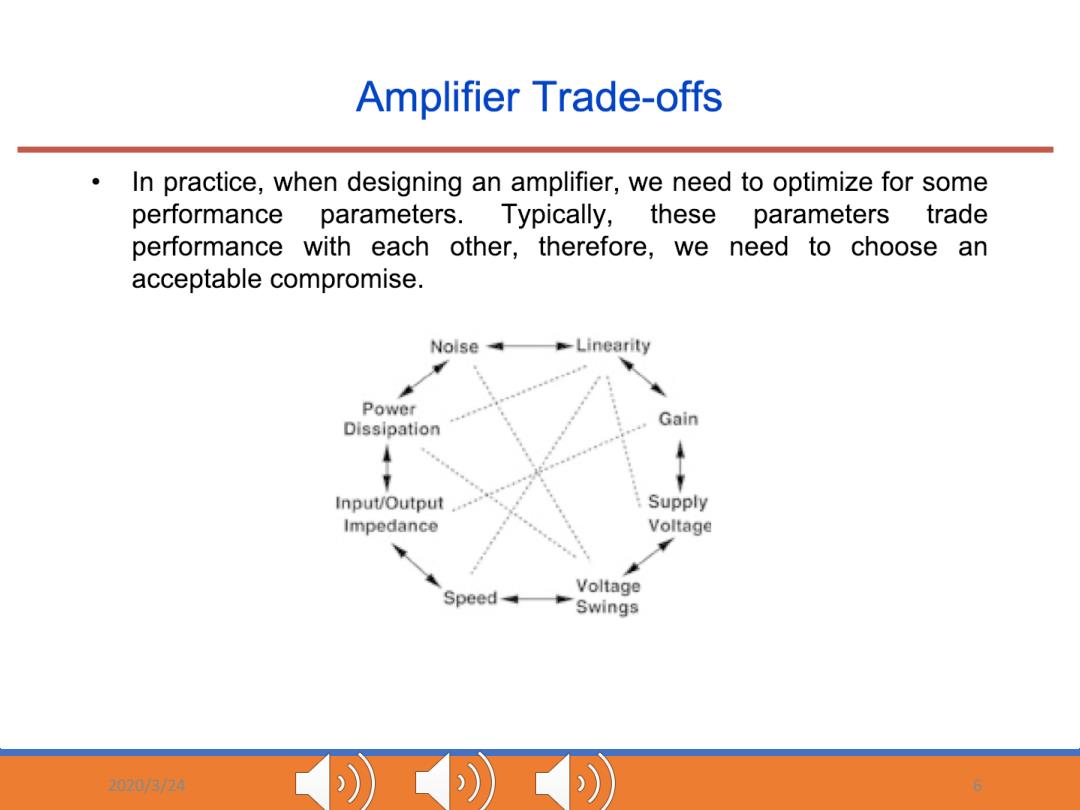
Amplifier Trade-offs In practice,when designing an amplifier,we need to optimize for some performance parameters.Typically,these parameters trade performance with each other,therefore,we need to choose an acceptable compromise. Nolse -Linearity Power Gain Dissipation Input/Output Supply Impedance Voltage Voltage Speed Swings 03/74 )))
2020/3/24 6
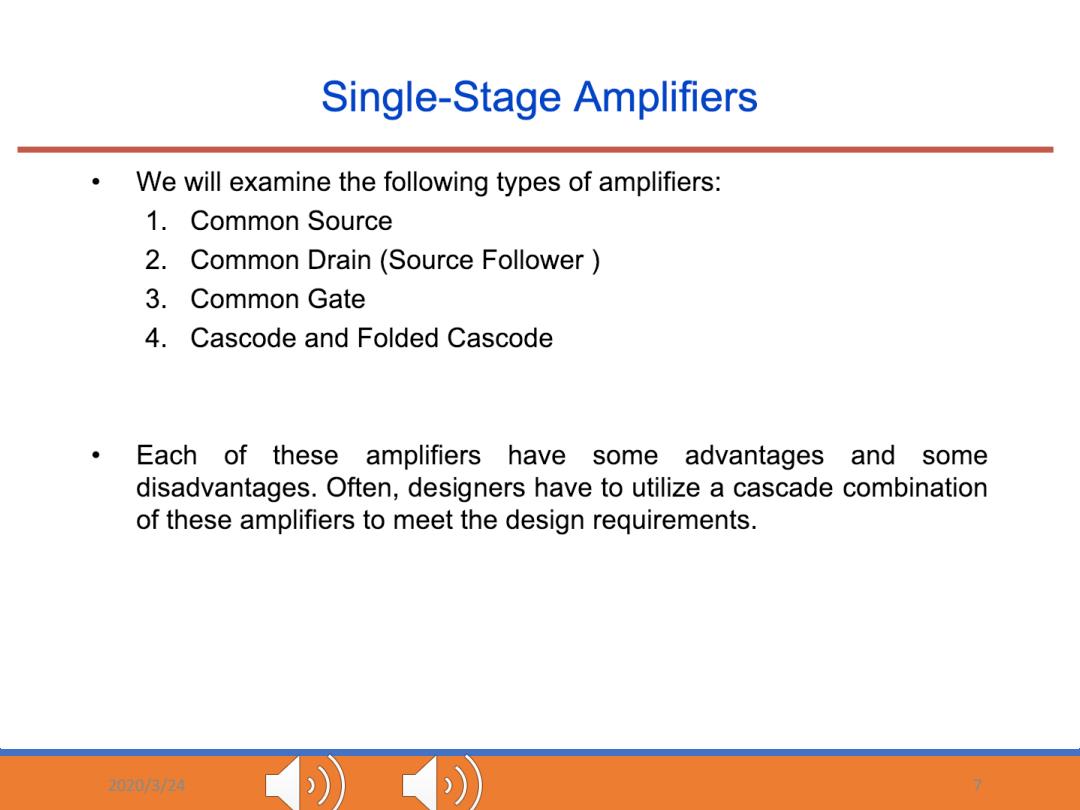
Single-Stage Amplifiers We will examine the following types of amplifiers: 1.Common Source 2.Common Drain(Source Follower 3.Common Gate 4.Cascode and Folded Cascode 。 Each of these amplifiers have some advantages and some disadvantages.Often,designers have to utilize a cascade combination of these amplifiers to meet the design requirements. 03/74 ))
2020/3/24 7
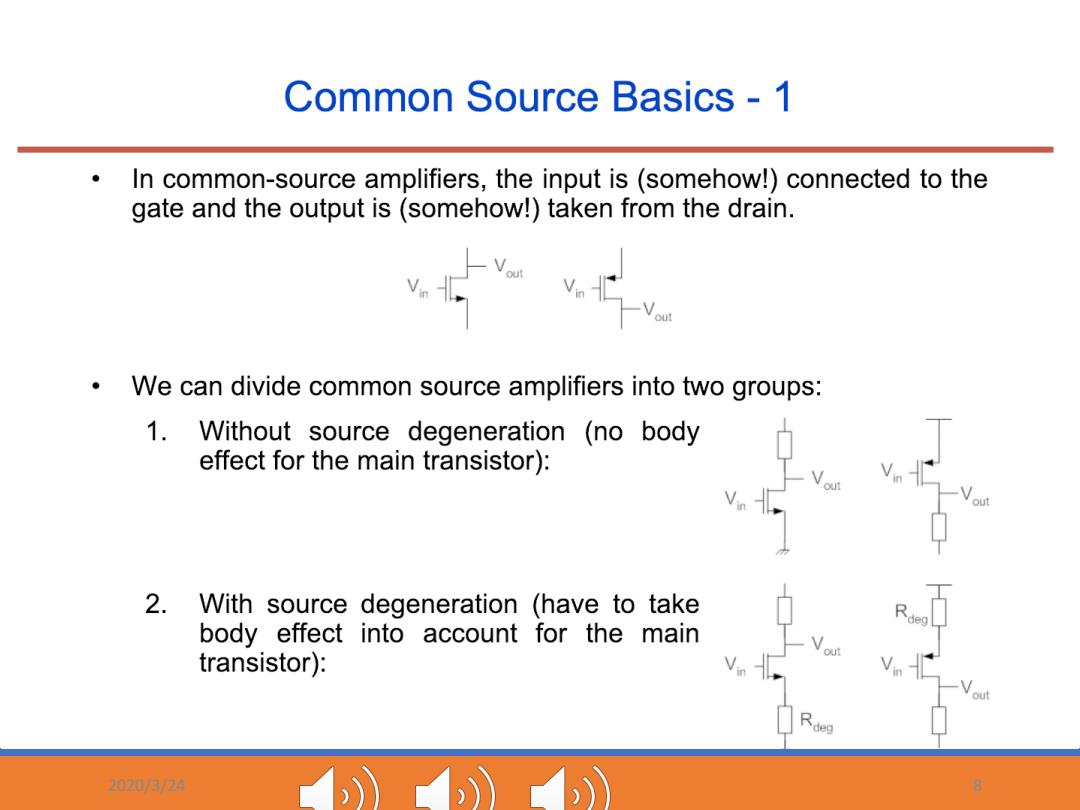
Common Source Basics -1 In common-source amplifiers,the input is (somehow!)connected to the gate and the output is(somehow!)taken from the drain. We can divide common source amplifiers into two groups: 1.Without source degeneration (no body effect for the main transistor): 2. With source degeneration (have to take body effect into account for the main transistor): 尺deg 032W 8
2020/3/24 8
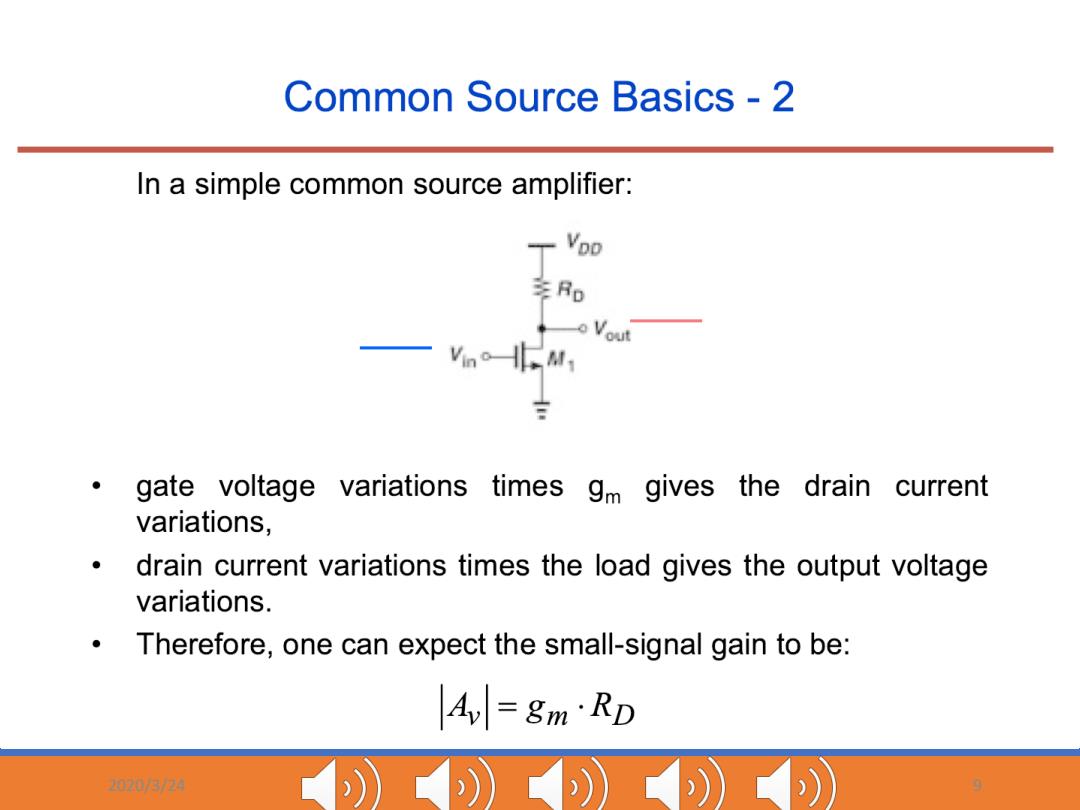
Common Source Basics -2 In a simple common source amplifier: 李Ro gate voltage variations times gm gives the drain current variations, drain current variations times the load gives the output voltage variations. Therefore,one can expect the small-signal gain to be: A=gm·RD 3/4
2020/3/24 9
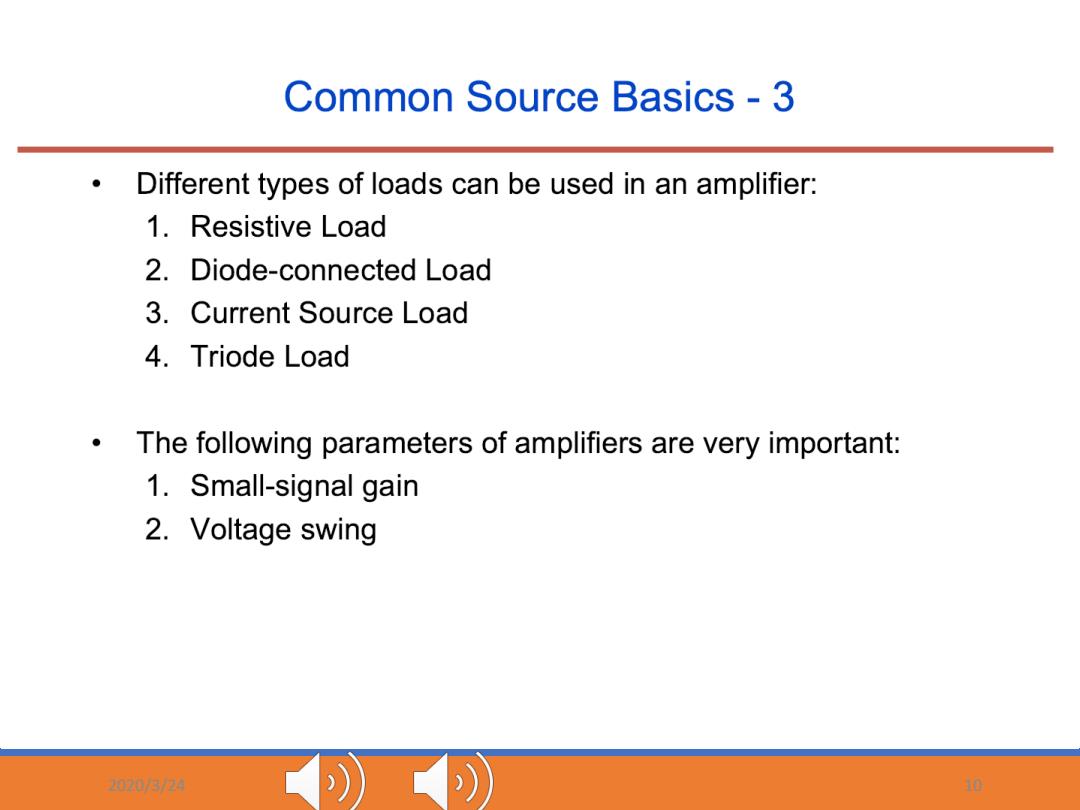
Common Source Basics-3 Different types of loads can be used in an amplifier: 1.Resistive Load 2.Diode-connected Load 3.Current Source Load 4.Triode Load The following parameters of amplifiers are very important: 1.Small-signal gain 2.Voltage swing 3/7 10
2020/3/24 10